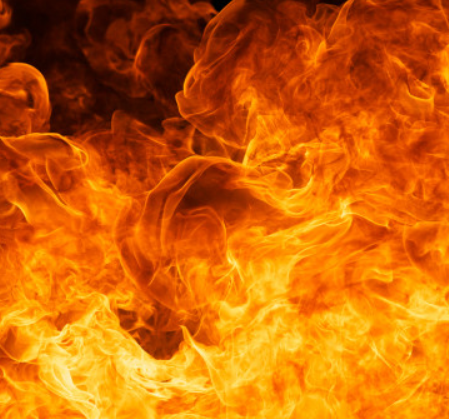FIRENADOES OUT OF WILDFIRES
It’s a summer that has seen an unusually high number of fires in some countries. At least 80 people have been killed in wildfires in Greece.
The California fire tornadoes have burned nearly 104,000 acres (42,000 hectares) since 23 July, according to the California Department of Forestry and Fire Protection (Cal Fire). Thousands of people have lost their homes, and six people, including two firefighters, have lost their lives during the fire tornadoes.
Fire tornadoes or firenadoes erupt out of wildfires. They’re similar to a whirlwind and occur when hot, dry air rises rapidly from the ground and forms a vertical column until it reaches cooler air high in the atmosphere. As more flames and hot air get pulled into the column, the structure starts to swirl into a vortex that pulls burning embers, flaming-hot gases and debris with it, creating violent and dangerous flames.
Worldwide, an area equivalent to about 20 times the size of Great Britain is burnt by wildfires in a typical year. But we rarely hear about wildfires in such isolated places. It tends to be those which threaten lives, infrastructure or natural resources that hit the headlines.
However, fire season is not over and there is a danger that strong vegetation growth in parts of the Mediterranean may fuel fires later in the coming months.
Educating people about the risks and having evacuation plans in place can also reduce the threat to human lives and the economy. We need to adapt and learn how to coexist with fire. Here are some vital things people should do to stay safe before, during and after wildfires and firenadoes:
IF YOU ARE UNDER A WILDFIRE WARNING, GET TO SAFETY RIGHT AWAY!
• Leave if told to do so.
• If trapped, call 9-1-1.
• Listen for emergency information and alerts.
• Use N95 masks to keep particles out of the air you breathe.
HOW TO STAY SAFE WHEN A WILDFIRE THREATENS
• Know your community’s evacuation plans and find several ways to leave the area. Drive the evacuation routes and find shelter locations. Have a plan for pets and livestock.
• Gather emergency supplies. Keep in mind each person’s specific needs, including and updated asthma action plan and medication. Don’t forget the needs of pets.
• Create a fire-resistant zone that is free of leaves, debris or flammable materials for at least 30 feet from your home.
• If you are not ordered to evacuate but smoky conditions exist, stay inside in a safe location or go to a community building where smoke levels are lower.
• Listen to authorities to find out when it is safe to return and whether water is safe to drink.
• Avoid hot ash, charred trees, smouldering debris and live embers. The ground may contain heat pockets that can burn you or spark another fire. Consider the danger to pets and livestock.
• Send text messages or use social media to reach out to family and friends. Phone systems are often busy following a disaster. Make calls only in emergencies.
Higher temperatures worldwide increase the risk of wildfires in many regions, but other factors are also important. Natural ignition by lightning is common in some regions such as the North America Boreal Forest, but in Europe the vast majority of fires are caused by humans. The deadly fires in Greece are a prime example of weather being only one important factor.
While climate change may have made more fuel available for such fires, human behaviour has also played a role. People often enjoy living or holidaying in forest areas, which also increases the risk of being directly affected by fire.
Adapted from the LiveScience, BBC and Ready websites

